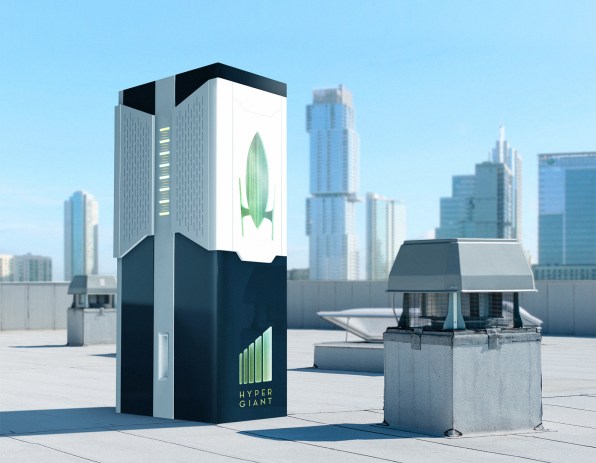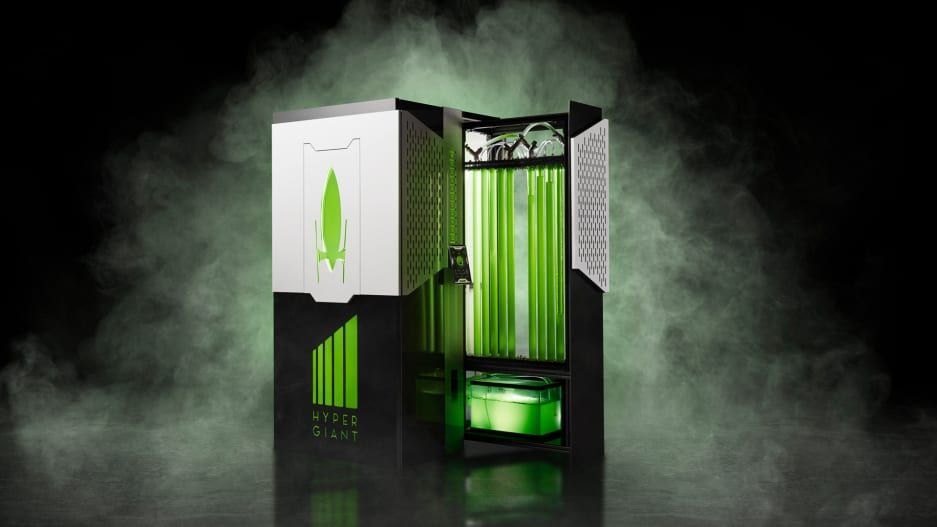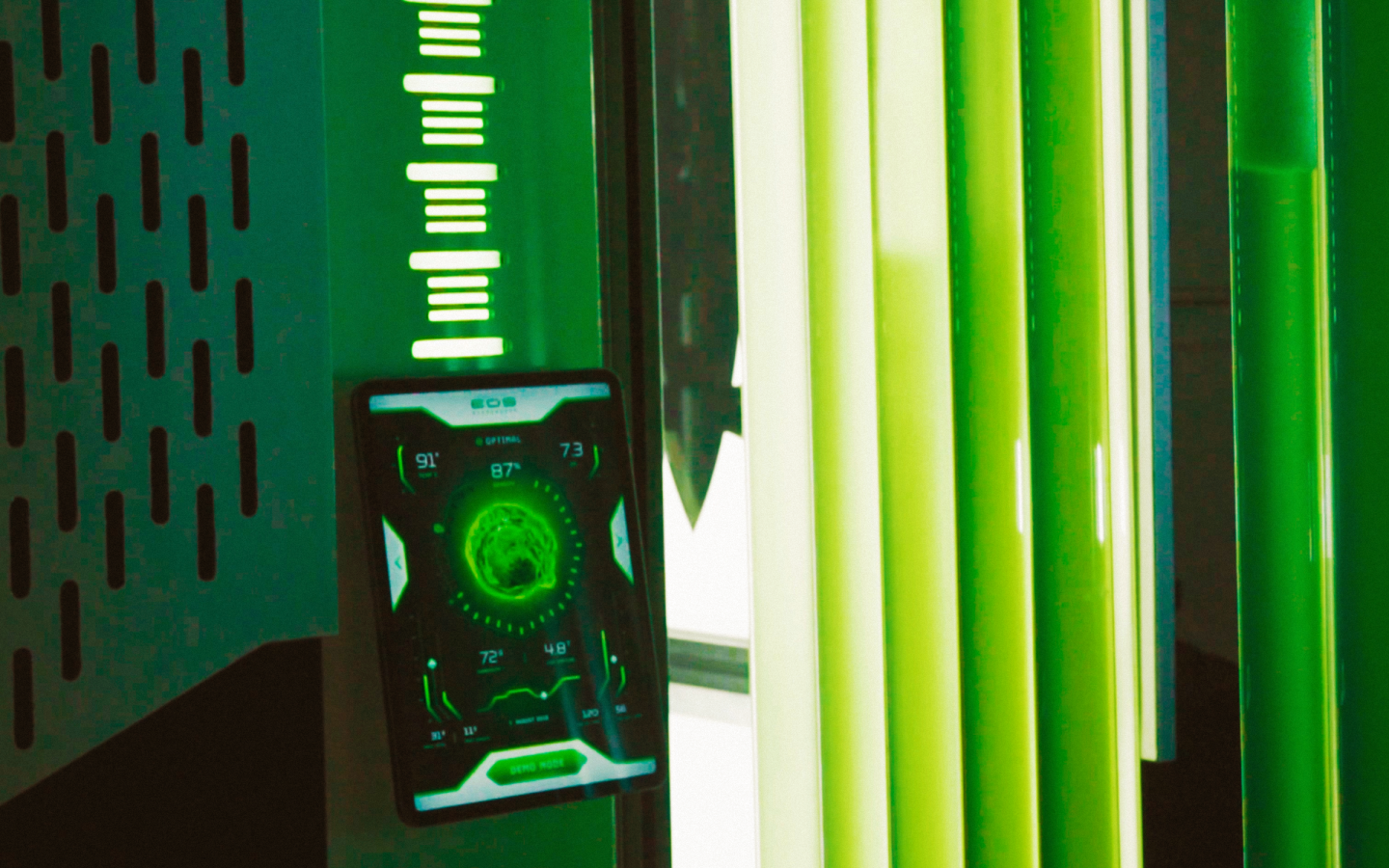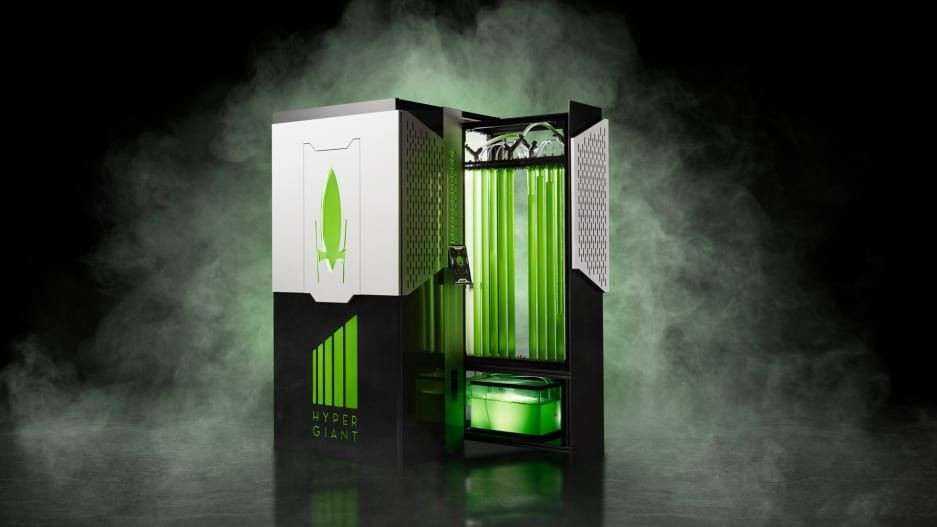- Sustainable Planet -
- 5mins -
- 798 views
Innovative algae bioreactor can remove as much CO2 as an acre of trees
Simply plug this personal carbon sequestration machine into your office’s HVAC system and start removing emissions from the air.
How algae could play an important role alongside trees in the fight against climate change
Earlier this week, Artificial Intelligence (AI)-focused technology company Hypergiant Industries announced a machine that uses algae to sequester carbon dioxide from the air. Algae, the company claims, is “one of nature’s most efficient machines.” By pairing it with a machine learning system, its developers hope to make these properties even more effective. What’s more, the team claims the device, which measures 3ft/0.91m on each side and 7ft/2.13m tall, can sequester as much carbon as an entire acre of trees — estimated to be somewhere in the region of two tons.

Algae grows much more quickly than trees, so it can also sequester carbon more quickly
Designed to fit inside offices and eventually sit on the rooftops throughout cities, HyperGiant Industries claim their Eos Bioreactor can capture as much carbon from the atmosphere as an acre of trees, and there’s already an initial working prototype.
Inside the bioreactor, algae does all the work. “What’s amazing about algae is it’s really cheap and it’s easy to grow—the core things it needs are sunlight, CO2, and water,” Ben Lamm, CEO and founder of Hypergiant Industries, an AI-focused tech company that developed a prototype of the device, called the Eos Bioreactor, told Fast Company.
Algae grows much more quickly than trees, so it can also sequester carbon more quickly. The company estimates the device, which optimises the algae’s ability to capture CO2, can sequester around two tons of carbon out of the air each year.
While the company isn’t the first to envision using algae to clean city air, Hypergiant, which typically creates AI-driven technology for companies in the aviation, space exploration, and defence industries, saw an opportunity to use machine learning to make more efficient algae-filled devices that could be more broadly deployed.
The team took the project on internally after exploring ways that they could use the company’s skills to tackle climate change. “As an emerging tech company that’s working in the field of AI and robotics and all of these super interesting things, we have not just an opportunity, but we have a responsibility to make some of our R&D lab time focused on the some of the biggest challenges,” Lamm says.
Source: FastCompany



The company is working on open source plans so people can build the bioreactors at home
As the 55-gallon device generates algae, it can be harvested and used to make products such as food, fertiliser, cosmetics, and even, potentially, fuel. The company envisions using the devices in various sizes depending on local needs. Some products—such as fuel or fertiliser—could potentially be consumed on site. While for others, the algae would need to be collected for processing elsewhere.
This would require rethinking larger systems. “There’s nothing new about the idea of growing algae to sequester carbon, and a few dispersed bioreactors alone are not going to reverse climate change,” Lamm says.
“In order for this to work, we need to approach this as the beginnings a new form of hyperlocal, decentralised supply chain, and then dovetail this work with a host of other initiatives that have the potential to dramatically change the way consumables are produced, processed, transported, and consumed, especially in our population centers.
“We want cities, companies, and individuals to adopt this technology, not just because it’s the right thing to do, but also because it’s cheaper and more practical than the alternatives.”
The team is currently building mobile applications that can monitor and run the bioreactors autonomously. The company aims to use the project to showcase the potential of algae as a solution.
Because it has a new division that works on smart tech for cities, it plans to work with cities to adopt the bioreactors along with other smart infrastructure.
However, it also wanted to make the device simple and low-cost enough that anyone could build one themselves, and so it’s working on open source DIY plans that it will release next year so people can build the bioreactors at home. “We’re trying to give more people options for how they can go make a difference in their own communities,” Lamm told FastCompany.
While no one will argue planting trees plays an important role in the pushback, alternative solutions such as carbon capture and storage and new sequestering technologies like this could also help remove carbon from the atmosphere.
This system is not to replace the importance of trees, rather it is to work alongside and in harmony with them. We welcome any and all measures that help mitigate a climate change catastrophe.
Source: FastCompany



